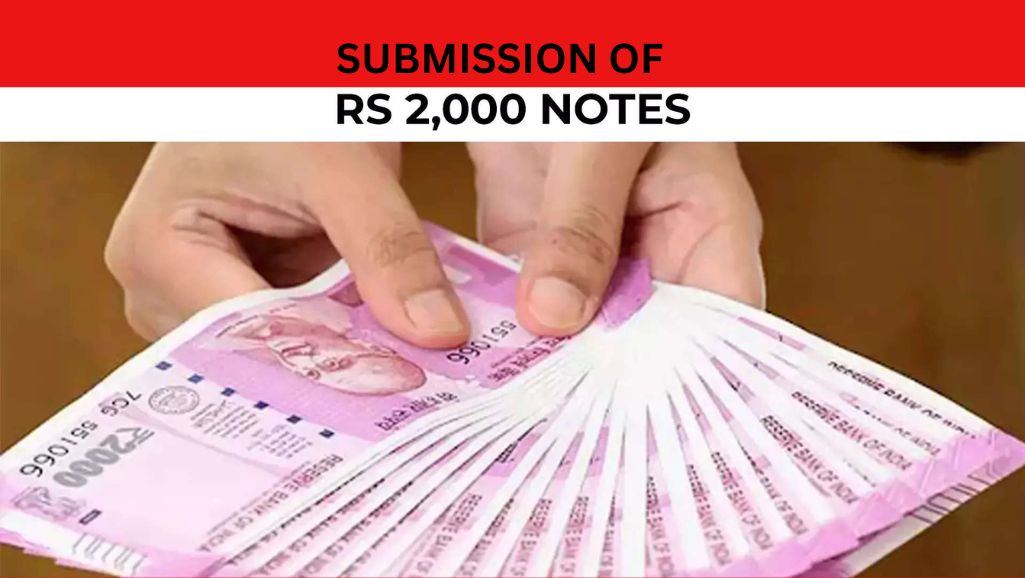Don't have an account?
Login to EaseMyDeal

2023-08-02
179
Introduction
In a significant development reported on July 31, the Reserve Bank of India (RBI) disclosed that a staggering 88% of 2,000 banknotes in circulation had been returned to the banking system. The total value of these banknotes received back from circulation amounted to 3.14 lakh crore. This revelation comes after the RBI's announcement on May 19 that it would withdraw the 2,000 notes, which accounted for 3.56 lakh crore on that day. This blog will delve into the implications of the RBI's decision and the reasons behind the move to curb the circulation of 2,000 banknotes.
The Genesis of the 2,000 Banknote
The 2,000 banknotes were introduced by the Indian government as part of its demonetization drive in November 2016. The bold move aimed to curb black money, and counterfeit currency, and promote digital transactions. At the time of its introduction, the high-denomination note was seen as a measure to facilitate larger transactions and ease the process of storing wealth.
However, the issuance of 2,000 banknotes also raised concerns among economists and policymakers. Critics argued that reintroducing such high-value denominations could potentially defeat the purpose of demonetization, as it may again encourage the accumulation of black money and hinder efforts to promote a cashless economy.
The Revelation: A Surprising Turn of Events
Fast forward to July 31, and the RBI's disclosure took many by surprise. The revelation that 88% of 2,000 banknotes had returned to the banking system suggests that the high-denomination note did not remain in circulation for as long as initially anticipated. This observation raises several questions about the effectiveness and purpose of introducing the 2,000 banknotes in the first place.
Reasons behind the Withdrawal
The RBI's decision to withdraw 2,000 banknotes from circulation can be attributed to several key factors:
1. Counterfeit Concerns: High-denomination banknotes are often prime targets for counterfeiters due to their significant value. The withdrawal of the 2,000 note may be a preemptive measure to combat counterfeiting activities and protect the integrity of the currency.
2. Currency Hoarding: The demonetization exercise in 2016 highlighted the issue of individuals hoarding large quantities of cash, often in the form of 2,000 notes. By phasing out this denomination, the RBI aims to discourage cash hoarding and promote a more transparent and regulated financial system.
3. Promoting Digital Transactions: The government's push towards a cashless economy requires a reduction in cash usage. The withdrawal of high-denomination notes like 2,000 can encourage people to embrace digital payment methods, leading to increased transparency and better tax compliance.
4. Managing Currency Circulation: Maintaining an appropriate balance of currency in circulation is crucial for any central bank. By withdrawing 2,000 notes, the RBI can better control the overall money supply, preventing potential inflationary pressures.
5. Encouraging Use of Lower Denominations: The discontinuation of 2,000 notes may lead to increased usage of lower-denomination currency, such as 500 and 100 notes, which are more suitable for day-to-day transactions.
The Impact on the Economy
The withdrawal of 2,000 notes is likely to have both short-term and long-term implications for the Indian economy:
1. Short-Term Disruptions: The sudden withdrawal of high-denomination notes may cause some short-term disruptions, particularly for businesses and individuals who heavily rely on cash transactions. However, with digital payment infrastructure becoming more widespread, the impact is expected to be minimal.
2. Improved Tax Compliance: The move can potentially boost tax collection and improve tax compliance as more transactions become traceable in the digital system.
3. Boosting Financial Inclusion: The increased usage of digital payment methods can lead to greater financial inclusion, as more individuals, including those in rural areas, gain access to formal banking channels.
4. Shift towards a Cashless Economy: With 2,000 notes phased out, there may be a gradual shift towards a cashless economy, where electronic transactions become the norm.
Conclusion
The RBI's disclosure that 88% of 2,000 banknotes in circulation have returned to the banking system by July 31 indicates a surprising turn of events since the note's introduction in 2016. The decision to withdraw the 2,000 notes comes with the aim of addressing issues such as counterfeit currency, currency hoarding, and promoting digital transactions. While the move may cause short-term disruptions, its long-term impact is likely to be positive, leading to increased transparency, improved tax compliance, and a gradual shift towards a cashless economy. As the Indian economy evolves, the withdrawal of 2,000 notes serves as a notable step in the nation's journey towards a more efficient, inclusive, and digitally-driven financial landscape.

Write A Comment